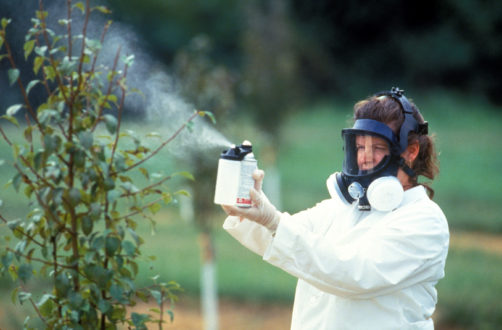Apr 9, 2020Respirator fit-testing temporary guidance expanded during COVID-19 pandemic
The U.S. Department of Labor’s Occupational Safety and Health Administration (OSHA) has expanded temporary guidance provided in a March 14, 2020, memorandum regarding supply shortages of N95s or other filtering facepiece respirators (FFRs) due to the COVID-19 pandemic.
This expanded guidance applies to all workplaces covered by OSHA where there is required respirator use. OSHA field offices will exercise enforcement discretion concerning annual fit-testing requirements, as long as employers have made good-faith efforts to comply with the requirements of the Respiratory Protection standard and to follow the steps outlined in the March 14, 2020 memorandum.
Employers should assess their engineering controls, work practices, and administrative controls on an ongoing basis to identify any changes they can make to decrease the need for N95s or other FFRs. When reassessing these controls and practices, employers should, for example, consider whether it is possible to increase the use of wet methods or portable local exhaust systems or to move operations outdoors. In some instances, an employer may also consider taking steps to temporarily suspend certain non-essential operations.
In light of concerns about a shortage of fit-testing kits and test solutions, OSHA encourages employers to prioritize use of fit-testing equipment to protect employees who must use respirators for high-hazard procedures. In the absence of fit-testing capabilities, if a user’s respirator model is out of stock, employers should consult the manufacturer to see if it recommends a different model that fits similarly to the model used previously by employees. OSHA field offices may exercise additional enforcement discretion when an employer switches to an equivalent-fitting make/model/size/style N95 or other filtering facepiece respirator without first performing an initial quantitative or qualitative fit test.
This expanded guidance will take effect immediately and remain in effect until further notice. It is intended to be time-limited to the current public health crisis. Check OSHA’s webpage at www.osha.gov/coronavirus frequently for updates.
Under the Occupational Safety and Health Act of 1970, employers are responsible for providing safe and healthful workplaces for their employees. OSHA’s role is to help ensure these conditions for America’s working men and women by setting and enforcing standards, and providing training, education and assistance. For more information, visit www.osha.gov.
The mission of the Department of Labor is to foster, promote, and develop the welfare of the wage earners, job seekers, and retirees of the United States; improve working conditions; advance opportunities for profitable employment; and assure work-related benefits and rights.















